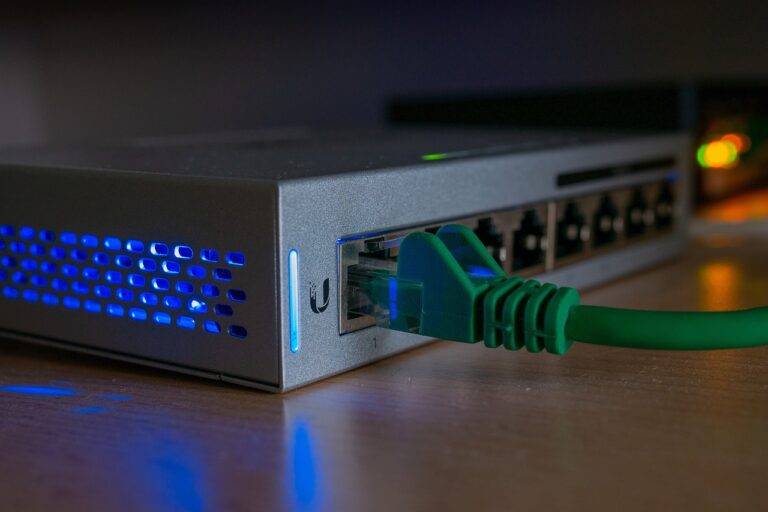Tech in Cybersecurity: Defending Against Ransomware Attacks
Ransomware attacks have become a major threat to businesses and individuals alike. These malicious software programs encrypt files on a victim’s computer or network, making them inaccessible until a ransom is paid. To defend against ransomware attacks, organizations and individuals must implement robust cybersecurity measures, including the use of advanced technologies. In this article, we will explore the role of technology in cybersecurity and how it can help defend against ransomware attacks.
Understanding Ransomware Attacks
Ransomware attacks are a form of cyber extortion that has been on the rise in recent years. These attacks typically involve hackers gaining unauthorized access to a victim’s computer or network and encrypting files using a strong encryption algorithm. The attackers then demand a ransom payment in exchange for providing the decryption key that will unlock the files. Ransomware attacks can have devastating consequences for businesses, including financial losses, reputational damage, and disruption of business operations.
The Role of Technology in Defending Against Ransomware Attacks
Technology plays a crucial role in defending against ransomware attacks. By leveraging advanced cybersecurity tools and techniques, organizations can significantly reduce the risk of falling victim to these malicious attacks. Some of the key technologies that can help defend against ransomware attacks include:
1. Endpoint Security Solutions
Endpoint security solutions are designed to protect end-user devices, such as laptops, desktops, and mobile devices, from cyber threats, including ransomware. These solutions use advanced threat intelligence and machine learning algorithms to detect and block malicious software before it can infect a device. By implementing endpoint security solutions, organizations can strengthen their defense against ransomware attacks.
2. Network Security Technologies
Network security technologies play a critical role in preventing ransomware attacks from spreading across an organization’s network. Technologies such as firewalls, intrusion detection and prevention systems, and secure web gateways help monitor and control network traffic to detect and block malicious activity. By deploying network security technologies, organizations can contain ransomware attacks and minimize their impact.
3. Backup and Recovery Solutions
Backup and recovery solutions are essential for defending against ransomware attacks. These solutions enable organizations to regularly back up their data and systems and quickly restore them in the event of a ransomware attack. By maintaining up-to-date backups and practicing regular recovery drills, organizations can mitigate the impact of ransomware attacks and minimize downtime.
4. Security Training and Awareness Programs
Security training and awareness programs are crucial for equipping employees with the knowledge and skills to recognize and respond to ransomware threats. By educating employees on cybersecurity best practices, organizations can reduce the likelihood of falling victim to ransomware attacks caused by human error, such as clicking on malicious links or opening infected email attachments.
5. Threat Intelligence Platforms
Threat intelligence platforms help organizations stay ahead of emerging ransomware threats by providing real-time information on the latest cyber threats and attack techniques. By leveraging threat intelligence platforms, organizations can proactively identify and respond to ransomware attacks before they can cause significant damage. These platforms enable organizations to better understand the tactics and objectives of attackers and strengthen their defenses accordingly.
6. Incident Response and Recovery Tools
Incident response and recovery tools are essential for effectively responding to ransomware attacks and minimizing their impact. These tools help organizations detect, contain, and eradicate ransomware infections, as well as recover encrypted files and restore systems to normal operations. By having robust incident response and recovery tools in place, organizations can quickly mitigate the damage caused by ransomware attacks and resume normal business operations.
FAQs
Q: How can organizations prevent ransomware attacks?
A: Organizations can prevent ransomware attacks by implementing a multi-layered cybersecurity strategy that includes endpoint security solutions, network security technologies, backup and recovery solutions, security training and awareness programs, threat intelligence platforms, and incident response and recovery tools.
Q: What should individuals do if they fall victim to a ransomware attack?
A: If individuals fall victim to a ransomware attack, they should not pay the ransom as there is no guarantee that the attackers will provide the decryption key or that the files will be successfully decrypted. Instead, individuals should report the attack to law enforcement authorities and seek the assistance of cybersecurity professionals to help recover their files and secure their devices.
Q: Are there any free tools available to help defend against ransomware attacks?
A: Yes, there are several free tools available to help defend against ransomware attacks, such as antivirus software, firewall solutions, and ransomware decryption tools. Organizations and individuals can leverage these tools to enhance their defenses against ransomware attacks without incurring additional costs.
In conclusion, technology plays a vital role in defending against ransomware attacks. By leveraging advanced cybersecurity tools and techniques, organizations and individuals can strengthen their defenses and reduce the risk of falling victim to these malicious attacks. By implementing a multi-layered cybersecurity strategy that includes endpoint security solutions, network security technologies, backup and recovery solutions, security training and awareness programs, threat intelligence platforms, and incident response and recovery tools, organizations can better protect themselves against ransomware threats and safeguard their data and systems from harm.





